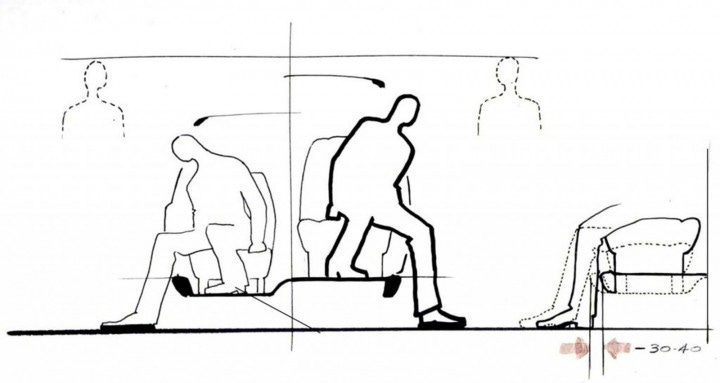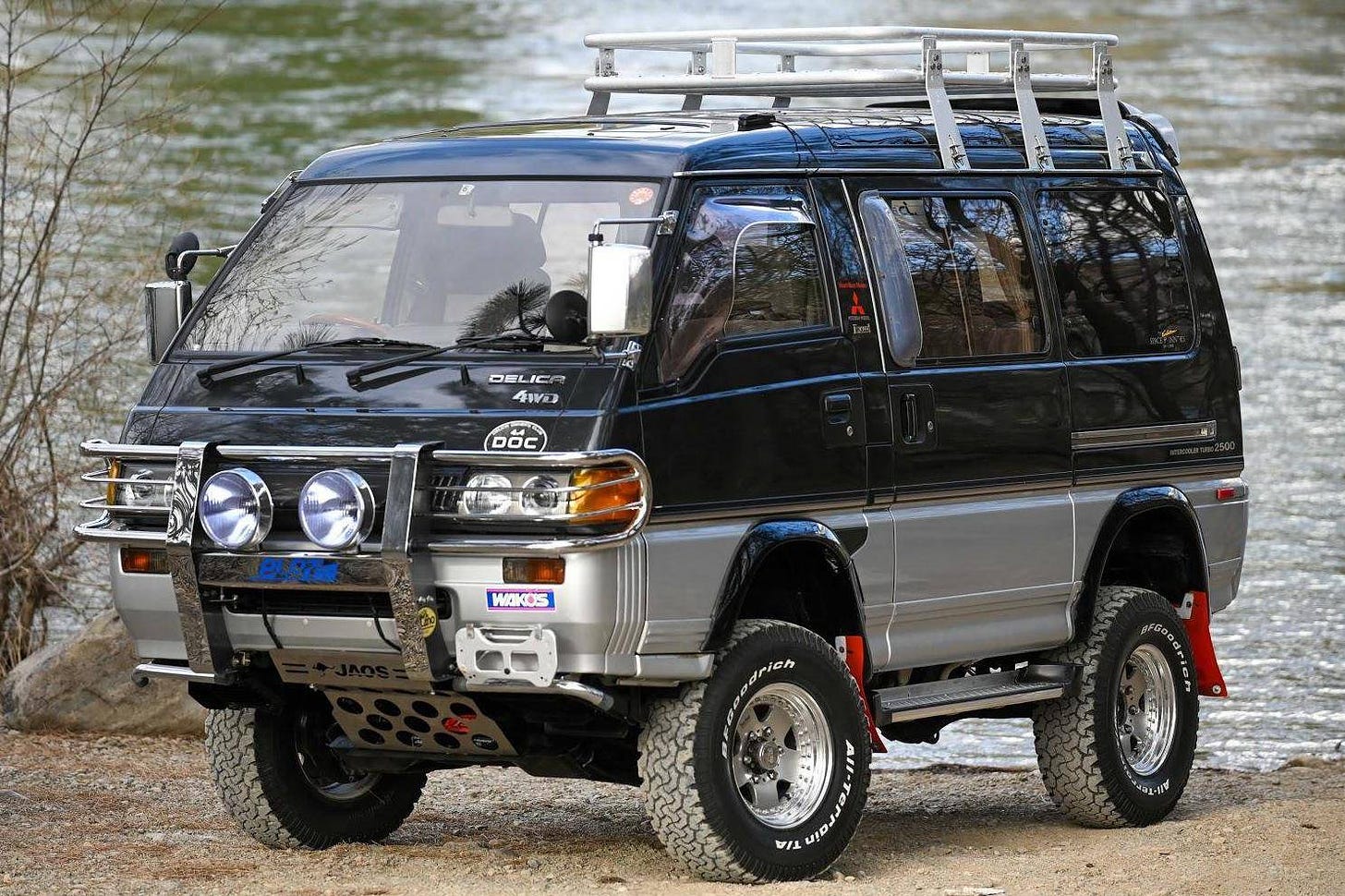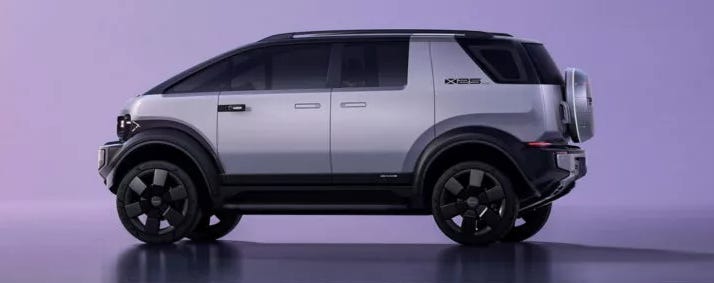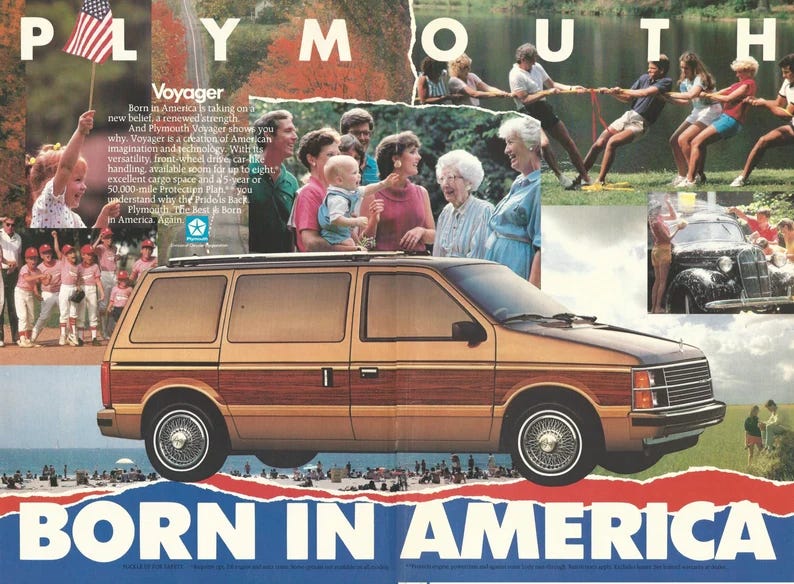Reilly Brennan | October 31, 2024
The Minivan Stigma Edition
Is the market quietly signaling an opportunity?
Reilly Brennan (RPB) co-founded Trucks and is the author of the widely-followed Future of Transportation weekly newsletter. Past contributions to WITI include the Nancy Meyers Leaf Blower Edition. Gregg Peter is the pseudonym of an automotive industry insider, who is not allowed to use his real name here.
Reilly & Gregg here. The minivan is experiencing an identity crisis. Once the undisputed champion of family transportation, selling 1.4 million units within the US market in 2000, today's minivan market has shrunk to a shadow of its former glory, with just 237,000 sold in 2023. The need for minivans in America hasn’t collapsed, though. Instead, they have become synonymous with relinquishing one’s individualism. Minivans don't have a function problem—they have an image problem.
Why is this interesting?
Minivans have more utility than sport utility vehicles. Anyone who's ever rented one for a family vacation knows the truth: these vehicles are absolutely brilliant at what they do. With sliding doors, flat load floors, and one-box design, minivans represent the pinnacle of practical familial transportation. Yet, despite their undeniable utility, buyers are increasingly turning their backs on them. Why? Because deep down, nobody wants their entire identity to be defined by parenthood. Even parents who buy those bulk trays of muffins at Costco.

The irony is that in certain corners of the automotive world, vans are experiencing a renaissance of cool. Consider the explosive growth of #vanlife, where converted Ford Transit vans and Mercedes-Benz Sprinters have become kitted-out symbols of adventure and freedom, rather than suburban resignation. These vans are larger and more expensive than traditional minivans, and have somehow escaped the stigma that plagues their smaller cousins.
Even more intriguing is what's happening in the U.S. import market, where intrepid buyers are sourcing and domesticating 90’s-era JDM (Japanese Domestic Market) vans like the cult-status Toyota Lite Ace and Mitsubishi Delica for use on American roads. These vehicles strike a balance between practicality and appeal, with the right amount of rugged cues to throw off the scent of Cheerios.

This phenomenon mirrors a familiar pattern in automotive history: Remember how the Bronco, Jeep, and Scout evolved from pure, rough-riding utility vehicles into the Explorers, Grand Cherokees, and Suburbans of today? These vehicles maintained their practical roots while adding a layer of aspirational appeal that resonated with consumers. They softened their hard utility origins with seat heaters and places to secure muffin trays over treacherous speed bumps.
We believe the market is quietly signaling an opportunity. While minivans represent only 1.5% of overall vehicle sales, they make up nearly 3% of rental fleet vehicles—suggesting people want to use them twice as much as they want to own them. Even Facebook founder Mark Zuckerberg commissioned a custom minivan, albeit based on a Porsche platform, hinting at untapped potential in the luxury/performance segment. The desire is there – the product just isn’t. Yet.
So here's the billion-dollar question: why hasn't a single U.S. automaker attempted to reinvent the minivan using the SUV formula that's proven so successful? The blueprint exists: take the practical benefits of a minivan, wrap them in more aggressive styling, add some aspirations toward an off-road capability, and position the new design as an adventure vehicle rather than just a kid-hauler.
Volkswagen might be onto something with their upcoming ID.BUZZ. Though it's technically a minivan under its retro-futuristic skin, it's being marketed as something entirely different—a lifestyle vehicle that happens to have flexible seating and sliding doors. Meanwhile, in China, manufacturers like Chery are experimenting with rugged, higher-riding van-like designs that could signal a coming convergence point between minivan and off-roader.

The minivan's salvation, then, might lie in embracing its utility while shedding its soccer mom image. Imagine a vehicle designed to look more like a moon rover than a grocery-getter, combining the practical features families need with the adventurous spirit they want. The future of the minivan doesn't have to be a choice between practicality and desirability.
The question isn't whether minivans are useful—it's whether automotive designers can make us feel better about ourselves while driving them. Slide the door open and climb on in: We’re going to the future.
Quick links:
1936 Stout Scarab, likely the first design of a minivan in production
The original Plymouth and Chrysler minivans of the 1980s featured wood vinyl supplied by 3M in their DI-NOC lineup
1984 Plymouth Voyager history snapshot.
